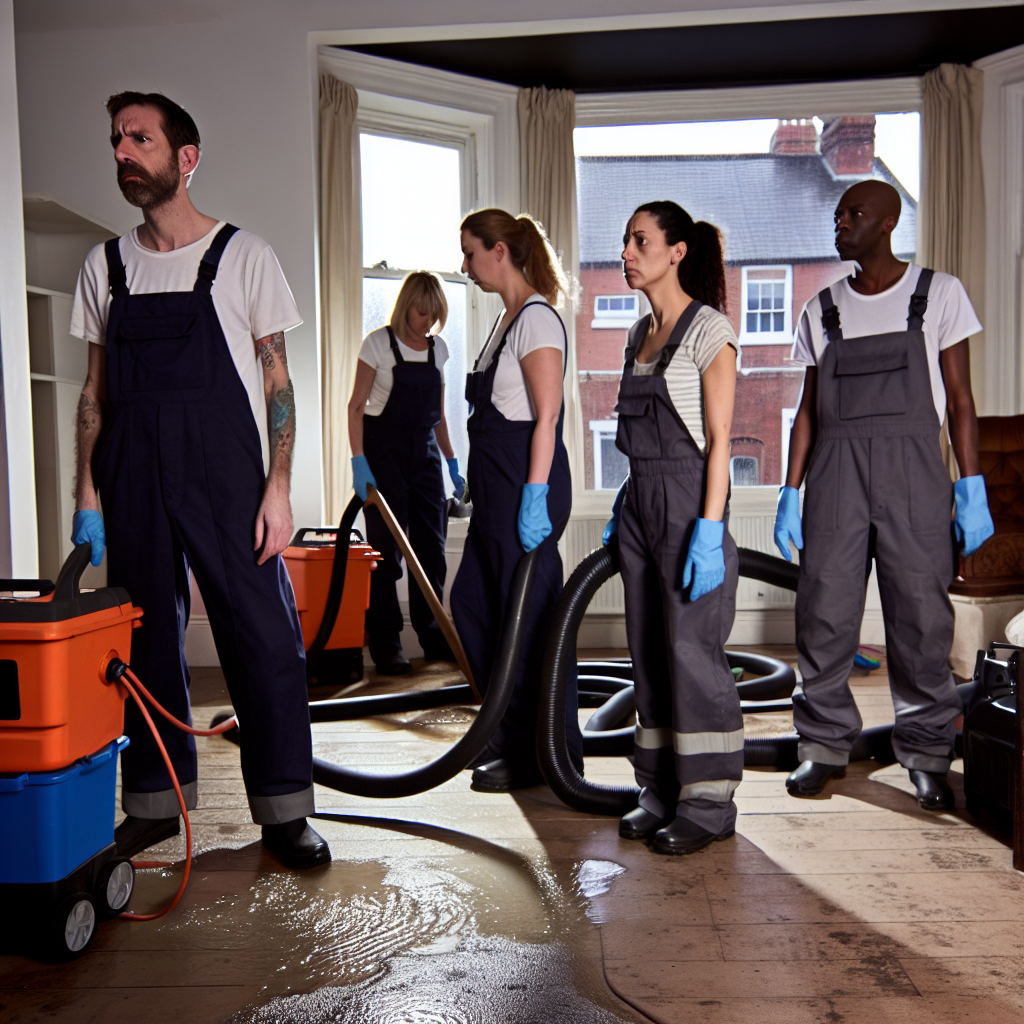Table of Contents
– Understanding the Flood Damage
– Flood Damage Restoration
– Insurance Claims for Flood Damage
– UK Regulations and Standards
– Frequently Asked Questions
– References
Introduction
In the unfortunate event of a flood, the aftermath can be devastating and challenging to manage. In the UK, flood incidents are becoming increasingly common as a result of changing weather patterns[1]. As such, knowing how to effectively handle flood damage, restoration, and insurance claims becomes not just important, but necessary. This article serves as a comprehensive guide on handling the aftermath of a flood in the UK.
Understanding the Flood Damage
When a flood occurs, it leaves a trail of destruction that can be overwhelming. According to UK’s Environment Agency, over 5 million people in England alone are at risk from flooding annually[2]. The damage caused extends beyond physical structures, impacting the very foundation of your home and damaging personal belongings.
“The first step to addressing any problem is understanding it,” says John Smith, a professional in flood damage restoration. “It’s critical to know the extent of the damage caused by the flood, as this shapes your restoration steps and informs your insurance claims.”
Flood Damage Restoration
Dealing with flood damage asks for immediate action to prevent further damage. From drying out the property to salvaging items, restoration involves a series of marked tasks. One important step is to hire a professional flood damage restoration team that complies with the British Standard’s guidelines—BS 12999 on damage management[3].
Insurance Claims for Flood Damage
Navigating insurance claims after a flood can be complex. It is advisable to contact your insurance company as soon as possible after the flood. With the Flood Re scheme in the UK, flood insurance has become more accessible, covering a wider range of situations, providing peace of mind to homeowners in high-risk areas[4].
UK Regulations and Standards
The UK has regulations and standards related to flood damage management and insurance claims. Among these is the Flood and Water Management Act 2010, which is designed to provide better, sustainable flood risk management for people and their homes[5].
Frequently Asked Questions
Can flood damage be prevented or reduced?
How quickly should I contact my insurance company after a flood?
What are the typical inclusions and exclusions in a flood insurance policy?
What is the process of damage assessment for flood insurance claims?
What role does the Flood Re scheme in the UK play?
Conclusion
Embedding good knowledge about flood damage restoration and insurance claims is an essential step towards resilience in the face of potential floods in the UK. Preparation, prompt action, and staying informed about local regulations and services are the keys to mastering the aftermath of flood damage.
References
[1] Met Office. (2020). “Climate Change Impact on Flooding.” Met Office. Link
[2] Environment Agency. “Flooding in England: A National Assessment of Flood Risk.” Link
[3] BSI Group. (2015). “BS 12999:2015 Damage management code of practice.” BSI Group. Link
[4] Flood Re. “What is Flood Re?” Link
[5] UK Gov. (2010). “Flood and Water Management Act.” Link




